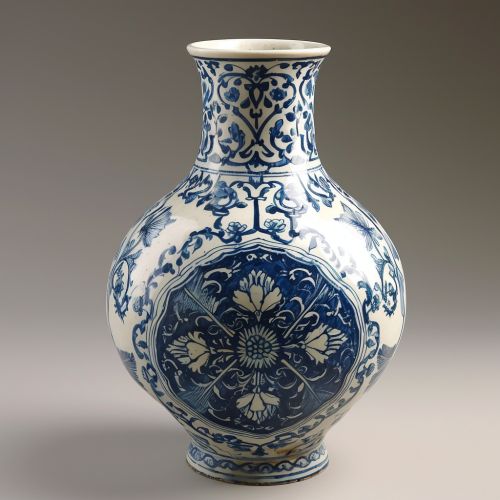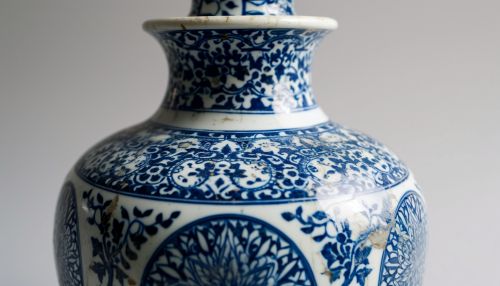Porcelain
History
Porcelain, a type of ceramic material, has a rich and complex history that spans across many centuries and cultures. The earliest known examples of porcelain were created in China during the Eastern Han dynasty (25-220 AD). These early pieces were made from kaolin clay and fired at high temperatures, resulting in a hard, white, and translucent material. The Chinese continued to refine their porcelain techniques over the centuries, leading to the development of the highly prized blue-and-white porcelain during the Yuan dynasty (1271-1368) read more.


The secret of porcelain production remained in China until the 16th century, when Portuguese traders brought porcelain items to Europe. European potters were fascinated by the beauty and durability of these items and began attempts to replicate them. The first successful production of porcelain in Europe was achieved by Johann Friedrich Böttger in 1708 in Meissen, Germany read more. This led to the establishment of the Meissen Porcelain Manufactory, which became a leading center for porcelain production in Europe.
Production Process
The production process of porcelain involves several stages, including the preparation of the raw materials, forming, glazing, and firing. The primary raw materials used in porcelain production are kaolin, a type of clay, and petuntse, also known as china stone. These materials are cleaned, crushed, and mixed with water to form a slip, which is then formed into the desired shape using various techniques such as throwing, molding, or casting read more.
After the porcelain item has been formed, it is allowed to dry before being fired in a kiln. The initial firing, known as the bisque firing, is done at a lower temperature and results in a hard, porous item. The item is then glazed, which involves applying a thin layer of liquid glass to the surface. The glazed item is then fired again at a higher temperature, known as the glost firing. This firing vitrifies the porcelain, making it hard, white, and translucent.
Types of Porcelain
There are three main types of porcelain: hard-paste, soft-paste, and bone china. Hard-paste porcelain, also known as true porcelain, is made from kaolin and petuntse and is fired at high temperatures. It is hard, white, and translucent, and it is highly resistant to scratching and chipping. Hard-paste porcelain was first produced in China and later in Meissen, Germany.
Soft-paste porcelain is made from a mixture of clay and glassy feldspar. It is fired at lower temperatures than hard-paste porcelain and is less durable. Soft-paste porcelain was first produced in Europe in the 16th century, before the secret of hard-paste porcelain was discovered.
Bone china is a type of porcelain that is made from bone ash, kaolin, and petuntse. It is known for its high levels of whiteness and translucency, and it is the strongest type of porcelain. Bone china was first produced in England in the late 18th century read more.
Uses of Porcelain
Porcelain has many uses, ranging from decorative items to practical applications. Decorative items such as vases, figurines, and tea sets are often made from porcelain, and the material's white color and translucency make it an ideal canvas for intricate designs and patterns. Porcelain is also used in the production of tableware, including plates, bowls, and cups, due to its durability and aesthetic appeal.
In addition to decorative and tableware items, porcelain is also used in a variety of industrial applications. For example, porcelain is used in the production of electrical insulators due to its excellent insulating properties. It is also used in dental prosthetics, such as crowns and bridges, due to its strength and resemblance to natural tooth enamel read more.
Porcelain in Art and Culture
Porcelain has played a significant role in art and culture throughout history. In China, porcelain items were often used in religious ceremonies and were considered symbols of purity and perfection. The intricate designs and patterns found on Chinese porcelain items often reflected the beliefs and values of the time.
In Europe, porcelain items were highly prized and collected by the nobility. The production of porcelain was often sponsored by royal courts, and porcelain items were considered a status symbol. The designs and patterns found on European porcelain items often reflected the artistic trends of the time, such as the Rococo and Neoclassical styles.
Today, porcelain continues to be a popular material in art and design, with contemporary artists and designers using it to create a wide range of items, from sculptures to furniture read more.
